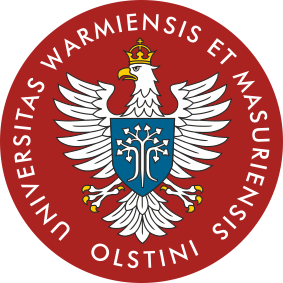Editorial
Understanding the essence of creativity as overcoming the resistance of matter and bringing into existence anything creator lacks, leads the method itself becoming a condition for achieving the goal. It is one of the basic mechanisms of all creative activity, both in arts, in scientific research and in every other field of human activity. The right combination of needs and skills allows you to effectively achieve the expected result in the expected time. However, there are also gaps that cannot be filled with existing technologies. Then alternative paths can be looked for, often by combining perspectives from different disciplines. Interdisciplinary research means not only greater freedom of choice of research issues, but also gives access to a wider selection of methodological solutions.
Disputes over art, questions of the legitimacy of the rules and the scope of their application, but also doubts about the possibility or even the need to break them - create the history of artistic ideas that are intertwined with the basic solutions in the history of human thought. The concept of form appeared already in antiquity, and it turned out to be both capacious and imprecise. Its classic views, preserved mainly by the followers of Aristotle's thought, were most widely received. equating the formal essence of the work with its conceptual essence. The binary opposition between form and content (matter) that arose in this way was complicated over the next centuries, leading to ambiguity. In the thought of Kant and many philosophers of the next two centuries, this concept meant a construction created by the mind in the course of getting to know an object, including a work of art. Taking this point of view, following the thought of Roman Ingarden, the musical form should be considered as an order arising in the mind of the interpreter-performer, the concept of which is in turn reflected in the mind of the listener. In addition, it is sometimes understood as a contour or a construction plan.
In the world of music, two meanings are functioning parallely, in the first one, the musical form is understood as the principle of organizing all elements, and in the second, as a construction or a plan for the arrangement of the work's elements in time. Similarly, in the field of visual arts, this concept is not unequivocal. Various definitions are allowed, but the most universal, and at the same time one of the simplest, terms seems to be the notion of form as the superior and general construction principle that allows the arrangement of the elements of the work to be organized. A form conceived in this way can be contrasted with specific content, characters, thoughts and information. The main theme of the second volume of the Artistic Forum is the relationship between form and meaning. In many aesthetics, these concepts are not contradictory. From the very beginning, the concept of form did not refer only to abstract constructions, on the contrary - the compatibility of form and content was an expression of artistic maturity and perfection. An example of a different position is Witkiewicz's aesthetics of pure form, assuming its liberation from content dependency. An attempt to defend Witkacy's aesthetics against the accusations of Leon Chwistek was made by Krzysztof Kościuszko.
Art is one of the methods of changing reality. The most realistic work, by focusing attention on a specific object, changes the cognitive perspective, often directly exaggerating it, thus giving it a higher rank in the hierarchical order of the world known to us. The search for connections between form and idea by decoding the philosophical, social and individual content of the works of the contemporary Argentinean artist Daniel Garcia, was presented by Manuel Quaranta from the Faculty of Fine Arts of the Rosario University in Argentina. Each avant-garde of the last century had its own approach to form. One of the constant tendencies was to combine graphics, poetry and music, which was in fact a return to the Greek roots of the arts. Treated as emblems or images in themselves, works of concrete poetry were often also encoded scores, and the sonority of poetry was one of the basic formal requirements. The phenomenon of word-sound-image in Russian avant-garde poetry was devoted to his article by Sergej Birjukov from the Faculty of Philosophy of the Martin Luther University in Halle and Wittenberg.
Being an order and formation, form determines the shape and boundaries of the work, and often gives them additional meanings. By referring to other texts of culture, we also refer to a different historical and social context, thanks to which we can decode the hidden meanings of the world. Such an attempt, based on a painting by Jarosław Modzelewski What? Plane. What? A lost welder, Anna Matysiak from Warsaw.
Since prehistoric times, nudes have been one of the themes that play a special role in art. Also today, through its direct and symbolic meanings, the human body allows for a creative balance of style, content and form. The article by Davorin Kereković from the University of Zagreb is devoted to the creative search of Marek Szczęsny, a professor at the Faculty of Art at UWM in Olsztyn.
Krzysztof Szatrawski

